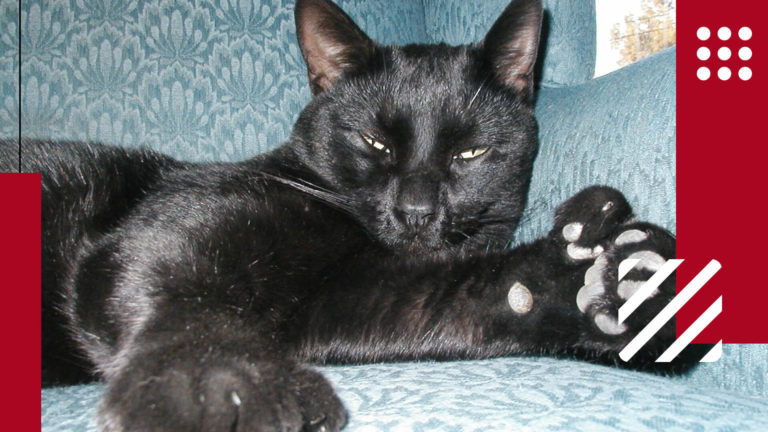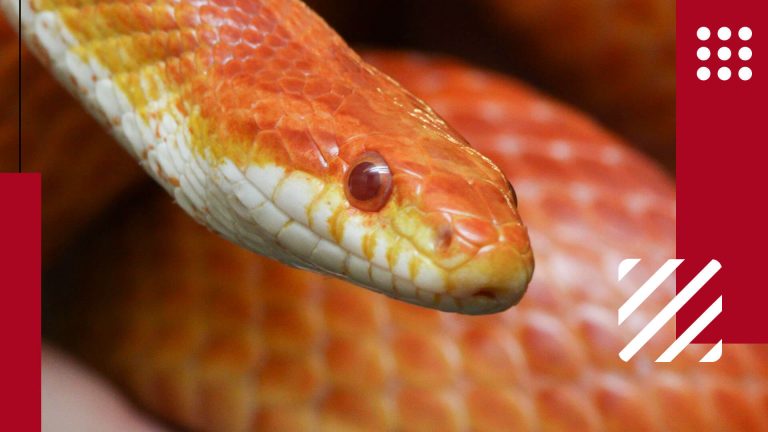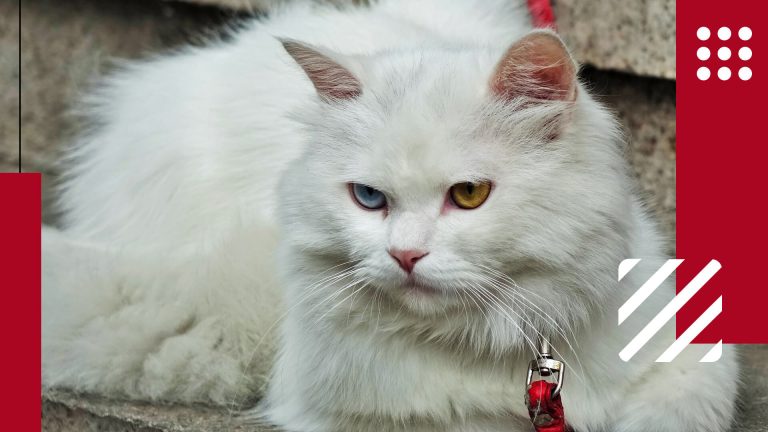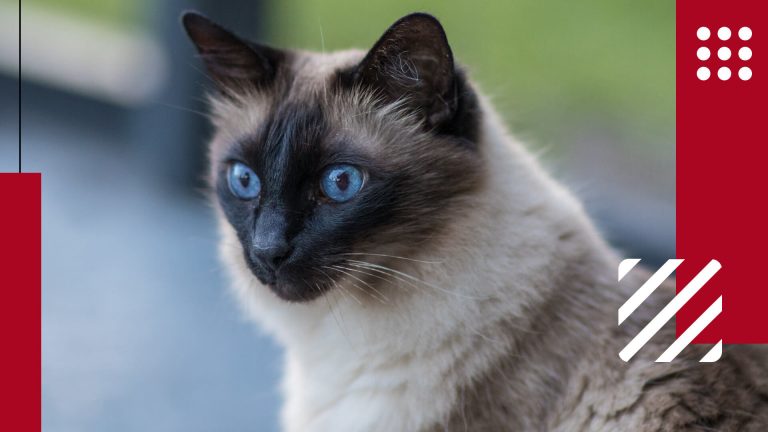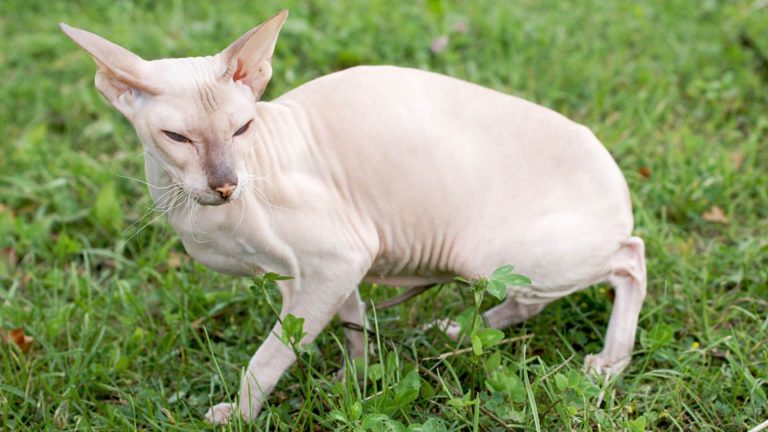Tortoiseshell cats are named for their coat, which is typically black and orange or red in color, resembling the shell of a tortoise. These cats are not a specific breed, but rather a type of coloring that can occur in many different breeds. The coloring is the result of a genetic mutation that causes the production of the two different colors in the same animal. The exact origin of this mutation is not known, but it is thought to have been present in cats for many centuries.
Distinctive Features Tortoiseshell Cat
Tortoiseshell cats, also known as torties, are known for their distinctive features that set them apart from other cats. Here are some of their notable characteristics:
- Coat Color: The most prominent feature of tortoiseshell cats is their unique coat color pattern. Their fur is a mix of two colors, usually black and orange, forming a beautiful mosaic of patches. The colors can vary in intensity and distribution, creating a vibrant and eye-catching appearance. While the majority of torties are black and orange, some may have additional colors like white or gray mixed in.
- No Two Torties Are Alike: Each tortoiseshell cat has a one-of-a-kind coat pattern. Due to the genetic factors that determine their coat color, it is highly unlikely to find two torties with identical markings. This individuality adds to their charm and makes them truly unique and special.
- Personality: Tortoiseshell cats are often known for their spirited and sassy personalities. They are often described as feisty, independent, and assertive. While each cat has its own personality, torties are often known to be vocal, opinionated, and full of energy. They can be quite affectionate and form strong bonds with their human companions, but they may also display a touch of stubbornness and strong-willed behavior.
- Calico vs. Tortoiseshell: Although calico cats and tortoiseshell cats have similar coat color patterns, they are technically different. Calico cats have a three-color coat pattern, consisting of white, black, and orange patches. Tortoiseshell cats, on the other hand, have a two-color pattern without any white patches. However, in some regions, the term "tortoiseshell" is often used interchangeably to refer to both torties and calicos.
- Symbolic Beliefs: In some cultures, tortoiseshell cats are believed to bring good luck and protection. They are associated with various superstitions and folklore, such as being a sign of wealth or serving as a talisman against evil spirits. In many countries, tortoiseshell cats are considered to bring good fortune to their owners.

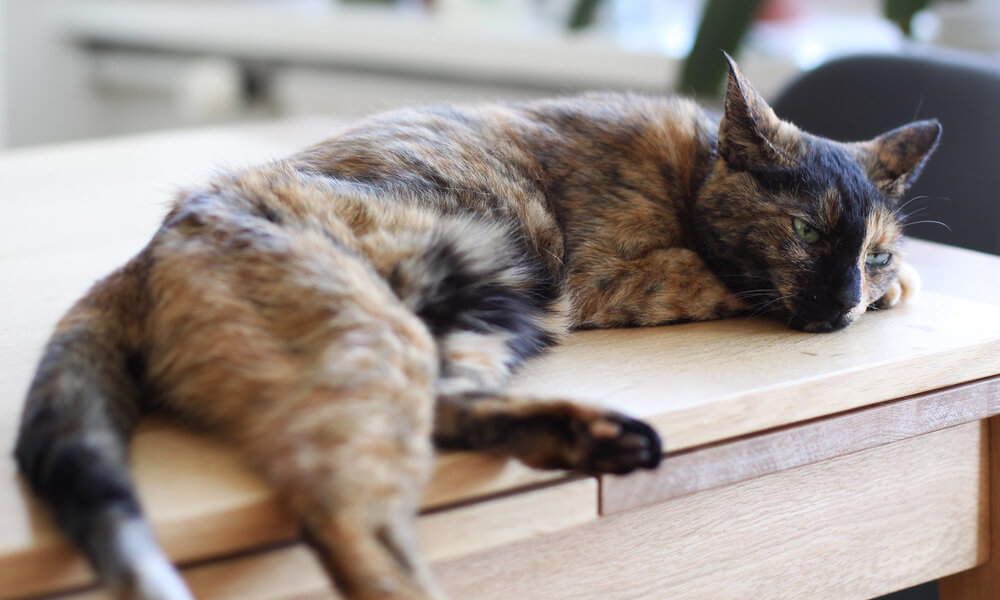
How to Take Care of Pet Tortoiseshell Cat?
Caring for a Tortoiseshell cat is a special experience filled with unique beauty and personality. With their stunning coat patterns and spirited personalities, they make wonderful companions. Get ready for a cat that will capture your heart with their independent nature and undeniable charm.
How to Set Up a Habitat for Tortoiseshell Cat?
Since tortoiseshell cats are not a specific breed, there is no one-size-fits-all answer to this question. The best way to set up a habitat for a tortoiseshell cat would be to consider the specific needs of the breed they belong to, as well as the individual needs of the cat. Some general guidelines for setting up a habitat for a domestic cat include providing a comfortable bed or sleeping area, access to fresh water and food, and a litter box for waste.
Provide plenty of toys and scratching posts to keep the cat entertained and engaged. It is best to consult with a veterinarian or animal behaviorist for specific advice on setting up a habitat for a tortoiseshell cat.
What to Feed Your Pet Tortoiseshell Cat?
As with any cat, it is important to feed a tortoiseshell cat a balanced and nutritious diet. This typically includes a high-quality commercial cat food that is specially formulated to meet the nutritional needs of a cat. It is a good idea to consult with a veterinarian or animal nutritionist to determine the best type of food for your tortoiseshell cat.
In general, wet food can be a good option for cats, as it contains a higher moisture content than dry food, which can be important for cats that do not drink enough water on their own. It is also important to avoid giving your tortoiseshell cat any human foods that are toxic to cats, such as chocolate, onions, and grapes.
What to Avoid Feeding Your Pet Tortoiseshell Cat?
As I mentioned before, it is important to avoid giving your tortoiseshell cat any human foods that are toxic to cats. These include chocolate, onions, grapes, and anything containing caffeine. Other human foods that should be avoided include fatty and sugary foods, as well as anything that is spoiled or moldy. In addition, it is important to avoid giving your tortoiseshell cat any bones, as they can splinter and cause digestive problems. It is also best to avoid giving your cat any raw or undercooked meat, as this can contain harmful bacteria. Finally, it is important to avoid overfeeding your tortoiseshell cat, as obesity can lead to a number of health problems.
Health Concerns of Tortoiseshell Cat
As with any cat, it is important to be aware of potential health concerns and to monitor your tortoiseshell cat for any signs of illness. Some common health concerns for domestic cats include dental problems, Klinefelter Syndrome, Feline lower urinary tract disease (flutd), obesity, respiratory infections, and parasites. It is also important to be aware of the potential for genetic conditions, such as polycystic kidney disease, which can be more common in certain breeds of cats.
Regular check-ups with a veterinarian can help to identify any potential health concerns early on, allowing for timely treatment and management. It is also important to provide your tortoiseshell cat with a balanced and nutritious diet, as well as plenty of opportunities for exercise and play, to help maintain their overall health and well-being.
What It's Like to Keep Tortoiseshell Cat as a Pet?
Having a tortoiseshell cat as a pet can be a very rewarding experience. These cats are known for their playful and affectionate personalities, and they can make great companions for people of all ages. As with any cat, it is important to provide your tortoiseshell cat with a safe and comfortable home, as well as a balanced and nutritious diet. It is also important to provide plenty of opportunities for exercise and play, to keep your tortoiseshell cat healthy and happy. Regular grooming and attention to their health care needs are also important for keeping your tortoiseshell cat happy and healthy.
Facts About Tortoiseshell Cats
Here are some interesting facts about tortoiseshell cats:
- Tortoiseshell cats are not a specific breed, but rather a type of coloring that can occur in many different breeds.
- The coloring is the result of a genetic mutation that causes the production of two different colors in the same animal.
- Tortoiseshell cats are often referred to as "torties" for short.
- These cats are known for their playful and affectionate personalities, and they can make great companions for people of all ages.
- In some cultures, tortoiseshell cats are thought to bring good luck and are considered to be lucky charms.
- The coloration of tortoiseshell cats is determined by the presence of two pigments, eumelanin (black) and pheomelanin (red or orange), in the same animal.
- Tortoiseshell cats are almost always female, as the genetic mutation that causes the coloring is located on the X chromosome.
- Tortoiseshell cats with white markings are sometimes called "calico" cats.
- These cats can have any of the physical characteristics of the breed they belong to, such as long or short hair, a round or pointed face, etc.
- Tortoiseshell cats are often considered to be more rare and unique than other cats due to their distinctive coloring.
Frequently Asked Questions About Tortoiseshell Cats
Here are some commonly asked questions about tortoiseshell cats:
Are tortoiseshell cats a specific breed?
No, tortoiseshell cats are not a specific breed. The term "tortoiseshell" refers to the distinctive coloring of these cats, which is the result of a genetic mutation that causes the production of two different colors in the same animal. Tortoiseshell cats can belong to any breed, and the coloring can occur in both long-haired and short-haired cats.
Are tortoiseshell cats male or female?
Tortoiseshell cats are almost always female, as the genetic mutation that causes the coloring is located on the X chromosome. Male cats typically have only one X chromosome, and therefore only one copy of the mutation, which is not enough to produce the tortoiseshell coloring.
What is the lifespan of a tortoiseshell cat?
The lifespan of a tortoiseshell cat depends on a number of factors, including their breed, health, and lifestyle. In general, domestic cats can live for an average of 12-15 years, although some may live longer. It is important to provide your tortoiseshell cat with regular veterinary care, a balanced and nutritious diet, and plenty of opportunities for exercise and play to help ensure a long and healthy life.
What do tortoiseshell cats look like?
Tortoiseshell cats have a distinctive coloring that is typically black and orange or red in color, resembling the shell of a tortoise. These cats can have any of the physical characteristics of the breed they belong to, such as long or short hair, a round or pointed face, etc. The coloration of tortoiseshell cats is determined by the presence of two pigments, eumelanin (black) and pheomelanin (red or orange), in the same animal.
What is the personality of a tortoiseshell cat?
Tortoiseshell cats are known for their playful and affectionate personalities, and they can make great companions for people of all ages. These cats are often described as feisty and independent, with a strong will and a curious nature. They can also be very loving and affectionate with their owners and enjoy spending time with them.

